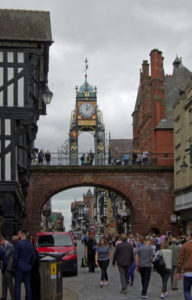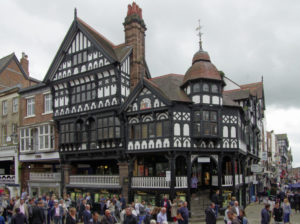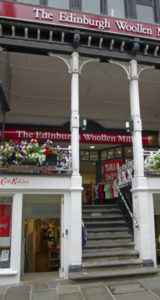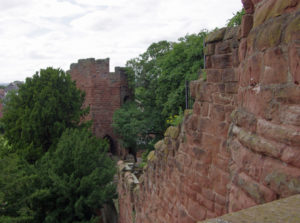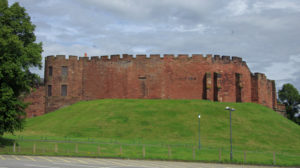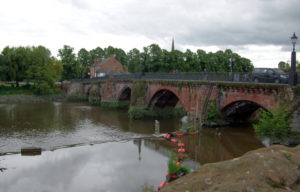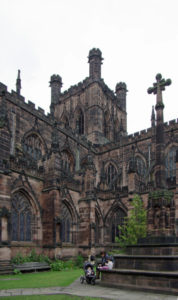Chester isn’t an automatic choice when it comes to picking a holiday destination, but it is a city with a long history and a lot to attract the tourist, whether it is for the day or longer. It has the only complete set of city walls, “the oldest racecourse”:http://www.chester-races.co.uk/ largest Roman amphitheatre, in Britain, plus a 1000 year old cathedral, 700 year old unique shopping rows and a “town crier.”:http://chestertowncriers.com/. ” Chester Zoo,”:http://www.chesterzoo.org/ is one of the best in Britain. You can take a “boat trip”:http://chesterboat.co.uk/ on the River Dee, or hire a rowing boat. There is an “open top bus tour”:https://city-sightseeing.com/en/89/chester/253/hop-on-hop-off-chester of the city, or better still a “trip”:http://www.chesterheritagetours.co.uk/chester-tours/ on a real heritage bus.
Chester’s position made it a strategic outpost of the Roman Empire. This was the base of the 20th Legion who built a walled fortress on a headland overlooking the River Dee. Not only was it the largest fortress in Britain, it was also one of the most important military bases in the Empire.
Little is left of “Roman Deva”:https://www.silvertraveladvisor.com/review/place/175480-review-chester now, apart from the “amphitheatre,”:https://www.silvertraveladvisor.com/review/attraction/175484 although the present walls follow the course of the Roman walls and the regular street plan inside the walls is based on that of the Roman fortress with the four main streets meeting at the central cross.
Chester is the only city in Britain to retain a complete circuit of “walls.”:https://www.silvertraveladvisor.com/review/attraction/175466-review-chester-city-walls They may not be as dramatic as parts of the walls at York, but you can walk all round the two mile circuit. They can be accessed at many different points and it makes a pleasant walk with views of many of the tourist attractions
The walls were refortified in the early C10th as a defence against Viking raids. They were again repaired by the Normans and later again after the Civil War which left the walls and towers battered and breached. By the C18th the walls were no longer required as defences and they became a fashionable promenade which is as popular now as it was then.
Chester was the last English city to fall to the Normans. To bring the area firmly under Norman control, William I appointed his nephew, Hugh d’Avranches, as Earl of Chester. He built Chester Castle and transformed the Saxon Church in the heart of the city into a large and well endowed Benedictine Monastery. At the Dissolution of the Monasteries, this became the “Cathedral.”:http://wasleys.org.uk/eleanor/churches/england/west_midlands/cheshire/cathedral/index.html Little is left of the original Norman building which was gradually replaced by a more splendid Gothic. The medieval choir stalls with their misericords and carved pew ends are one of he glories of the cathedral.
If you are wanting to see Norman architecture, head to the “Church of St John the Baptist”:http://wasleys.org.uk/eleanor/churches/england/west_midlands/cheshire/st_john/index.html just outside the walls. This was the original cathedral. Don’t be put off by the rather uninspiring Victorian exterior, the inside is pure Norman and one of he best Norman churches in Cheshire.
The “Castle”:http://www.english-heritage.org.uk/visit/places/chester-castle-agricola-tower-and-castle-walls/ stands at the south west corner of the walls which had to be extended to include it. The curtain walls on top of a motte guard the inner bailey with the keep like Agricola Tower guarding entry to it.
Chester became an important city in Medieval times with “The Rows”:https://www.visitcheshire.com/chester/rows being built on the foundations of the Roman fortress. They are completely unique and nothing else like them is found anywhere else in the world. There is a row of shops at street level with steps leading up to a first floor level covered walkway (the Row) with more shops off it. Some of the ground floor shops have stone undercrofts below them. The floors above the Row were used for domestic, commercial or storage. Many of the shops with their black and white frontages, are listed buildings. Tree ring analysis indicates that some of the buildings date back to the C13th.
Chester is a very good shopping centre and still retains a lot of small specialist shops as well as the chain stores.
Chester was a Royalist stronghold during the Civil War and Charles I is reputed to have watched the defeat of his army at the Battle of Rowton Heath. The citizens eventually surrendered when they faced starvation and large numbers died of plague the following year. Much of the centre of Chester had to be rebuilt after the Civil War and many of the timber frame houses date from then.
In the early C19th Chester became a very affluent city with the wealthy moving here to avoid the industrial sprawl of Manchester and Liverpool. They lived in the elegant Georgian terraces. Stone Georgian and Victorian buildings began to infill between the timber frame.
Chester escaped the worst effects of the Industrialisation. The Chester Canal was built in the late C18th in the (unsuccessful) expectation it would bring heavy industry to Chester.
The railway arrived on the route to Holyhead and the Irish ferry.
The Grosvenor Museum and the Town Hall are splendid examples Victorian architecture as well as making a statement of power.
Eastgate with its clock is probably one of the most photographed views in Chester. The Eastgate is the site of one of the Roman gateways into Deva, although the present gateway is mid C18th. The clock was added to mark the Diamond Jubilee of Queen Victoria. The ironwork was made in nearby Coalbrookdale. There was controversy when the clock was formally unveiled in 1899 on the Queen’s 80th birthday. It was felt the red and gold finish and the elaborate iron frame were too garish, and unsuitable to the surroundings. Now it is one of the iconic images of Chester.
The River Dee was once an important port. The river changed its course and suffered from silting. As ships grew larger the port moved further downstream. It was finally overshadowed by the development of Liverpool.
The Old Dee Bridge is the oldest in the city and still used by traffic today. It dates from the C14th although was widened in the early C19th.
There is now an attractive walkway along the river with plenty of seats, ice cream stalls, cafe, boat trips and even a miniature railways. On a sunny afternoon, there is a real holiday atmosphere and you can close your eyes and almost see Edwardian ladies in large hats wandering along arm in arm with their beaux.
Chester is definitely worth a visit….
